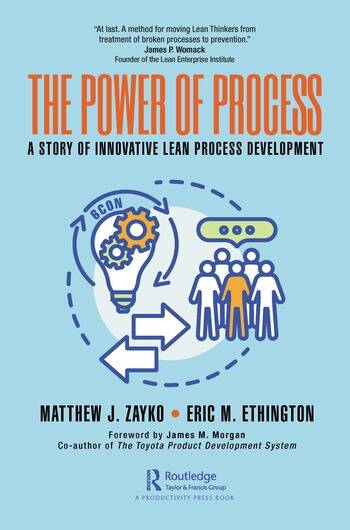
Process development – Putting the C in PDCA
SERIES – The authors discuss the fifth of six elements in their 6CON process development model – CONfirm – leveraging a robust launch readiness approach to finalize the process while ensuring it meets the targets set in the business plan.
Words: Eric Ethington and Matt Zayko
“Data is, of course, important…but I place the greatest emphasis on facts.”
Taiichi Ohno, Founder of the Toyota Production System
A TALE OF TWO PLANTS
It had to be frustrating for both operations. Plant A was in the midst of yet another poor performing launch. One year after winning a Shingo prize, they were now spending millions of dollars on extra employees, scrapped materials, and premium freight to compensate for a new, underperforming production process.
About five hours south, a sister plant – we will call it Plant B – was hosting the company’s senior manufacturing and vice-chairman. This was a monthly gathering in which corporate manufacturing policy was set and best practices were shared, and the leadership team had just completed their gemba walk.
During the gemba walk, workers at one of the stops shared the story of the great strides made in equipment uptime since the new system came online, leveraging operator engagement, proactive maintenance, and spare parts strategies. Another segment of the value stream shared how quality had been improved since launch, greatly improving yield and system stability. In final assembly, the team talked about their efforts to improve productivity through standard work improvement and problem solving. All great stories, resulting from the hard work of our talented employees – each sharing their progress over time in the form of a graph. Yep, that’s intentional, they all showed essentially the same graph, but with different labels on the Y axes (the X axes were time over a ten-week period). No matter the metric, it launched off target and through Herculean efforts and a lot of money, the processes were course-corrected over a ten-week period.

CONFIRM
Although the cycle of Plan, Do, Check and Adjust is used throughout the 6CON model, CONfirm can be thought of as the Check and Adjust of the entire process creation cycle. At this point in the development cycle, equipment and workplaces will become available, allowing for a deeper testing of the proposed value stream. Yes, value stream – we are not launching workplaces and equipment, we are launching a value stream and, therefore, this must be tested, checked, and adjusted. Can a simulated order be placed, and the expected value be produced all within the success parameters?
What are the success parameters? These were defined during the CONtext phase, informed our early lean score card, and have been evolving since. The absolute targets have not changed, but how they can be observed and measured has. For example, an on-time-delivery target cannot be directly measured until your system starts delivering, but there are proxies of that measurement that can be quantified throughout the development process. It could be a single metric or a complement of indicators, and for CONfirm an updated launch score card is a good starting point.
Ultimately, you will need to create a score card that makes sense for your organization, but we suggest embedding the following elements:
- Bias the weighting towards elements that can be measured while the value stream is “running.”
- What is considered to be a passing score should increase the closer the system is to its launch date. Early on, a 50% might be considered passing, but two weeks prior to launch a 90% might be required to pass.
- The score card needs to be supported by a help process and escalation rules. If a non-passing score is generated, what happens and when? Who is involved?
- The score card should be a mix of process and results measures

PLANS WITHIN PLANS WITHIN PLANS
Critical to the success of the CONfirm phase is to have a predefined launch-readiness plan, embedded into the overall development plan. The plan should have target dates and a sufficient quantity of trial runs to test the increasing robustness of the value stream. No more, no less.
Within each trail run, a detailed execution plan. At a minimum, involve the operators, the extended development team, and key suppliers. Look at the score card and the data that constitutes the numerators and denominators of each metric. Assign the capture of each piece of data to specific people. Everyone should have a job, rather than be a spectator. Meet immediately after the run to compile the data, calculate the scores, and capture observations. If a passing score is not achieved, pull the andon. Also, while the team is together, begin planning the next run. When will it be? Who will be involved? What will be different? Is any preparation required? Did we learn anything during this trial that could enhance the execution of the next trial?
MONEY DOESN’T GROW ON TREES
“Sounds expensive” is a comment we often hear when proposing trial runs. We would suggest that waiting to expose problems during regular production is more expensive and simultaneously exposes the customers to all the problems that are still inherent in the value stream. Additionally, the focus on post-launch problem discovery and resolution often starts what is called the “engineering death spiral”. While engineers (and other functions) are tied up fixing the value stream, they are getting behind on future development programs. When they finally get around to working on the new programs, they will be behind in their work, rushing and making mistakes that impact the next launch.
Nevertheless, we still need to be sensitive to cost and continue to practice “creativity before capital”:
- Is it reasonable to just test the high-risk areas?
- In some industries, after certain milestones are met all the units produced are saleable. Can this be taken advantage of?
- To reveal the right problems at the right time, what is the minimum amount of run time for each trial? (Hint: early trials need less run time than late trails.)
- Build the cost of the planned trials right into the project plan.
SOMETIMES THE END CAN BE THE BEGINNING
The pains of Plants A and B did not go unheard. They were viewed as an opportunity, a starting point. First was confirming where all new launches were, relative to their targets. It turned out the targets, although now always explicit, could be found. They were embedded in the calculations that determined the equipment needs and product costing for the business case and appropriation request.
As an organization, we then set a target: all new launches are expected to be performing at their targeted levels 30 days after production starts.
Then we set out to learn how to do better, how to systematically create great new processes.

For more details, please visit www.thepowerofprocess.solutions
THE AUTHORS


Read more


INTERVIEW – Planet Lean meets LEGO’s Ilona Takács to learn how the toy manufacturer looked at its corporate values to built a new, super-lean factory in eastern Hungary.


INTERVIEW – As we look back at the evolution of lean management in our countries, the story of Instituto Lean Colombia will certainly sound more than familiar.


FEATURE – The food industry is mired with problems all along the value chain. In this call to arms, the author explains why lean thinking is the only tool we have to transform it right now.


ARTICLE - What is lean? We all like to think that we know. This personal story reminds us all of how elusive the methodology can be, and how determined a practitioner has to be to fully grasp it.

